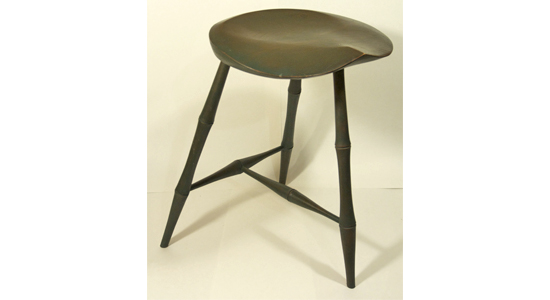Obviously I enjoy making lasting objects in wood. There are no other materials that draw me so strongly. Maybe it's being able to walk through the woods, standing in the shadows of the trees or the logic of the growth that allows for splitting, bending and carving, whatever it is I am hooked.
But there is another way that I use wood in my life, and that's to burn. I heat my house and shop with catalytic woodstoves. Every shaving and chunk of wood that won't make it into a chair goes towards keeping my home comfortable. Somewhere along the way, I came across an explanation of burning wood that connected the heat released during burning to the years of exposure to the sun. The tree takes the energy of the rays and transform it into energy for growth, and when burnt, gives back that same energy.
So whenever I look into a fire, I feel like I am seeing all the sunny days that the tree lived, a pleasant thought in the dead of winter.
My favorite fire is definitely the one in my syrup boiler. There is something close to perfection in the cycle of tree sap transforming into syrup by the heat of burning wood. As my wife can tell you, once the snow on the ground turns to the pebbly "corn snow", I spend way too much time out in the yard trying to improve my boiling rig. I take it as a challenge to create and channel as much heat, from as little wood as possible, to boil off as much water, in as short an amount of time, to get the most syrup, with the least energy expended.

This is my boiling rig. It consists of a 55 gallon drum with a hole cut in the top that houses three stainless chafing pans (like the ones in steamer tables). A hole in the end allows me to feed the fire inside and the sand at the rear helps to force the heat up to the pan in the rear on its way to the chimney. The sides of the drum are lined with corrugated roofing and backfilled with sand for insulation.
The pride that I take in my rig seems to be directly proportional to how ridiculous and half baked it looks.
This year I have also added a pipe and blower to help combust the wood fully and keep the fire high when adding fresh chunks. The key to a boiler is to keep the heat constantly high, no smoldering low fires. The chimney usually shows no sign of smoking, just waves of heat. This is vital when the goal is to turn 5 gallons of water into steam every hour.

Here is the forge blower that my friend Neil loaned me, a perfect addition. You can see the cooler in the back. It is one of about 6 that I use to store the sap as I collect it. This one has a tube that automatically feeds fresh sap into the one of the boiling pans. Below is a short video of the pans at a full boil. I cycle the sap through the pans so that the first pan gets the fresh sap and the last one has near finished syrup.

When I became interested in making syrup, I read a book called "Backyard Sugaring" by Rink Mann. It has been a great resource. Don't get the impression that a complex rig is necessary. All you need to do is boil water, period. When the sap reaches 7 degrees above the boiling temperature of water at your elevation, you have syrup. Filter it through a piece of felt and enjoy. But be forewarned, I started with 6 taps and a single pan over a fire pit, the challenge of increasing efficiency proved to much to resist!






















